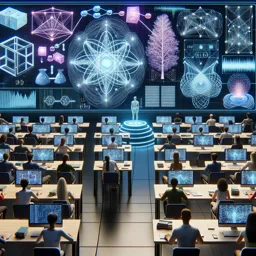What Is Generative AI?
Generative Artificial Intelligence (AI) refers to algorithms that create new content, such as text, images, music, or code. Unlike traditional AI that classifies or recognizes data, generative AI learns from large datasets to produce original, human-like outputs.
How Does Generative AI Work?
Generative AI uses advanced machine learning models, including Generative Adversarial Networks (GANs) and Transformers. These models analyze data patterns and generate new content by imitating the style, structure, or logic of the input data.
Real-World Use Cases of Generative AI
- Content Creation: AI tools can write articles, compose music, and generate artwork, supporting creative professionals.
- Natural Language Processing: Conversational assistants, translation tools, and summarizers rely on generative AI for natural, context-aware interactions.
- Healthcare: AI supports drug discovery and medical imaging, helping researchers and doctors with innovative diagnostic and treatment solutions.
- Gaming and Entertainment: Developers create realistic game worlds, characters, and dialogues using generative AI.
- Business Automation: Automated reports, product descriptions, and emails reduce repetitive tasks and improve efficiency.
Benefits and Challenges
Generative AI offers powerful creativity and automation benefits but raises challenges related to ethics, authenticity, and privacy. Responsible and transparent use is essential as adoption grows.
The Future of Generative AI
Generative AI’s potential is vast, with applications expanding into education, marketing, medicine, and engineering. Staying updated with these advancements helps individuals and organizations unlock new opportunities while managing the risks.
Conclusion
Generative AI is transforming industries by enhancing creativity, boosting productivity, and enabling innovative solutions. Its future lies in responsible use, with vast potential to shape how we work and create.

































